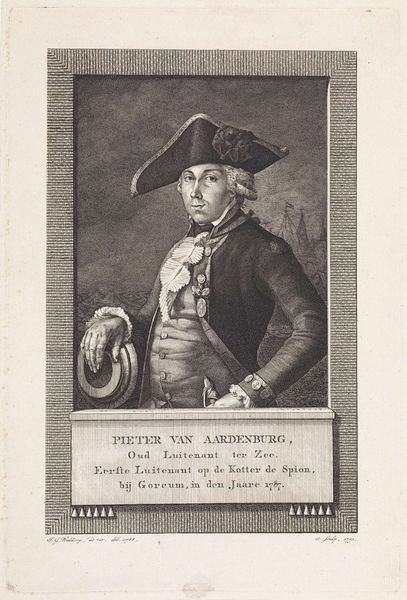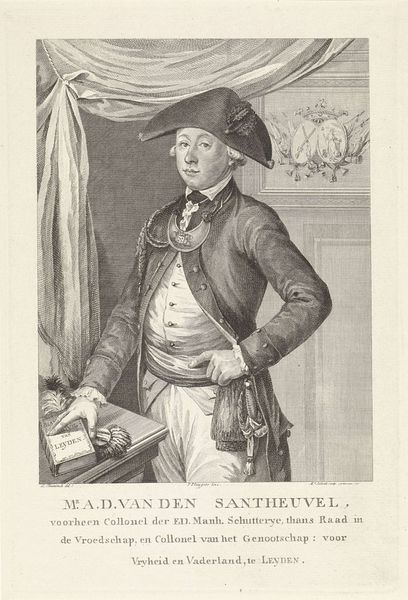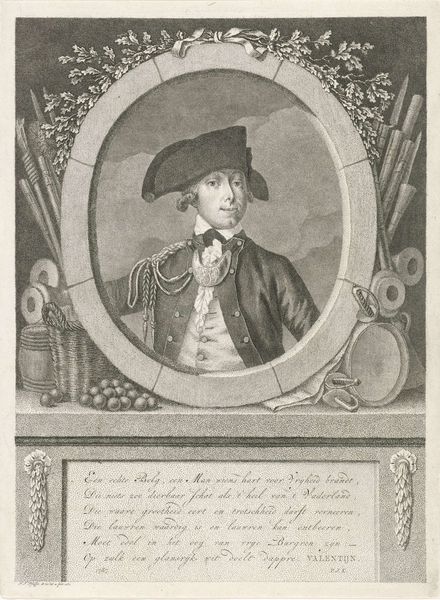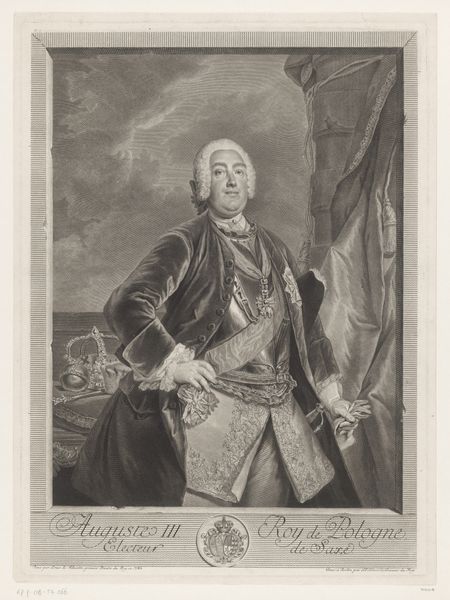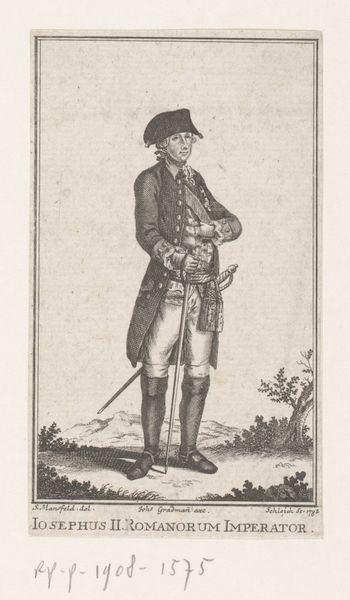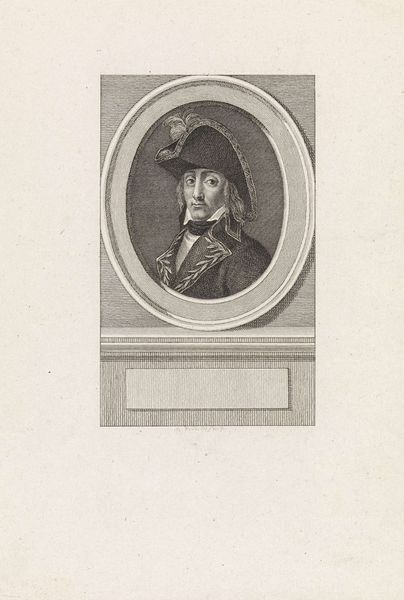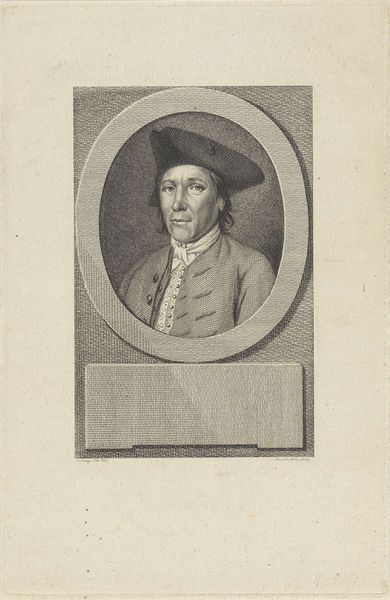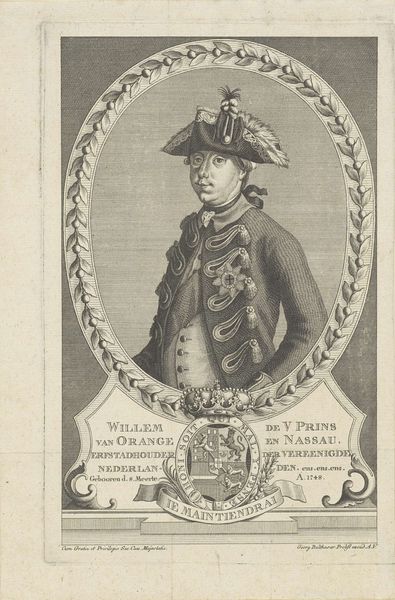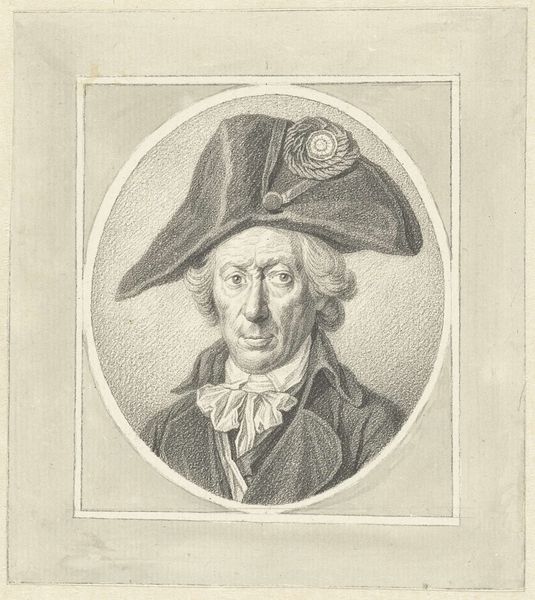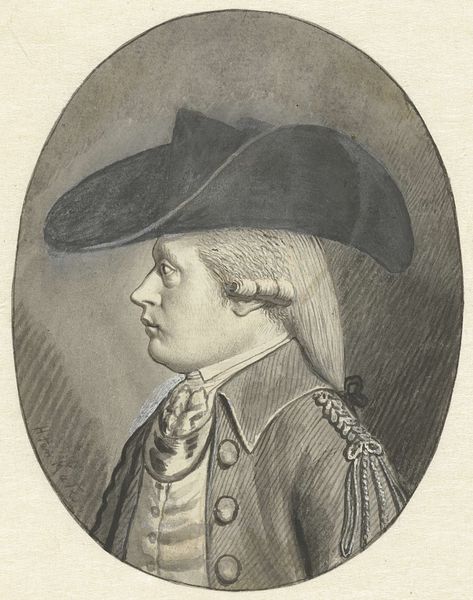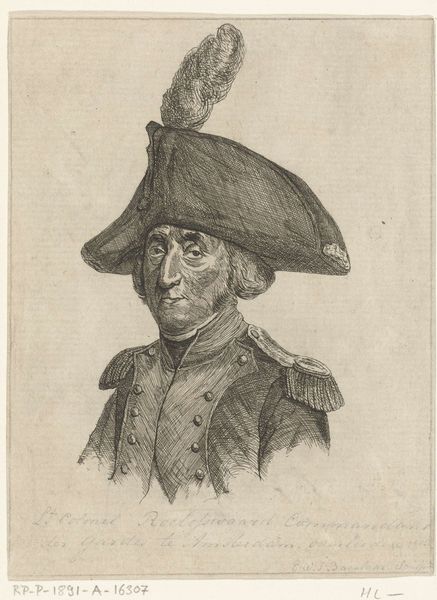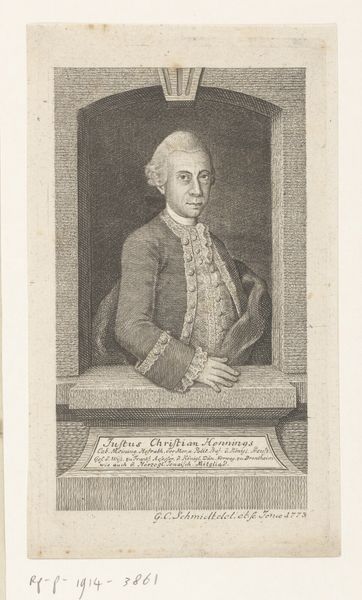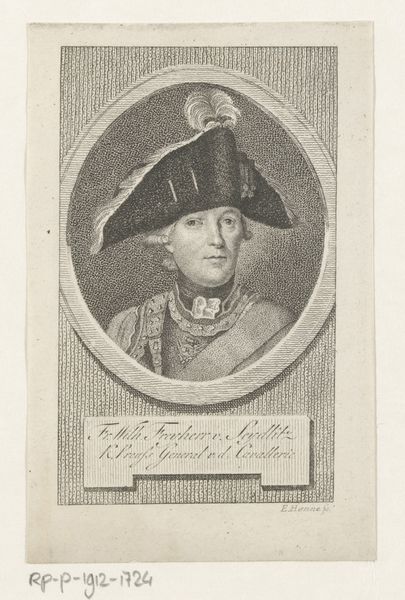
print, engraving
#
portrait
#
neoclacissism
# print
#
old engraving style
#
historical photography
#
history-painting
#
engraving
Dimensions: height 343 mm, width 237 mm
Copyright: Rijks Museum: Open Domain
Curator: Immediately, the engraving exudes such a crisp, austere quality. There’s an almost photographic stillness in the sitter's gaze. Editor: And what a subject to capture in this moment of...stasis? The work we're observing is Jan Gerard Waldorp's "Portrait of Lieutenant Pieter van Aardenburg," dating back to 1791 and held in the Rijksmuseum. We can clearly see a formal print but its style hints at its roots in neoclassicism, don’t you think? Curator: Undoubtedly. It speaks to the rising merchant and military classes, those commissioning and consuming art, demonstrating the rise of civic virtue. I want to linger a bit on the medium, though: an engraving! Think of the artisanal skill that demanded—the precise lines cut into the plate, each contributing to the tonal gradations. And the distribution networks—this wasn't a unique object but one meant for broader dissemination, almost like propaganda. Editor: Quite. Looking closer, the composition is so self-contained. The subject, rigidly positioned, seems framed not once, but twice, initially by the printed window he’s 'leaning' on, and again by the surrounding decorative border, each a clear semiotic indicator of status and order. Even the ship masts fading into the background of the work serve as an example of a classical approach, the so-called sublime nature depicted in many history paintings. Curator: I wonder, too, about the labor involved. How many prints were pulled? By whom? Were they apprentices, grinding away to reproduce these images, contributing to the prestige and portrait of Pieter van Aardenburg, but remaining largely unseen and unacknowledged? What’s the consumption pattern? How were these prints sold, framed, hung, perceived and reinterpreted? All relevant to how they circulated in society, don’t you think? Editor: Absolutely. Yet, I can't dismiss the sheer elegance. Consider the play of light and shadow across his face, rendering him with a kind of detached heroic presence. The subtle symbolism inherent in the medal placed below—what narratives does that open? Waldorp carefully manipulated line and tone to project a vision of military and national strength during this period. I would say we are considering neoclassicism. Curator: It certainly opens up questions on the distribution of that projected image. I suppose, ultimately, the enduring allure of such engravings lies not only in the subject represented but also in the processes of their creation, dissemination and subsequent engagement with the materials and structures that uphold those narratives. Editor: A fitting end to an equally thought-provoking encounter—thank you!
Comments
No comments
Be the first to comment and join the conversation on the ultimate creative platform.
